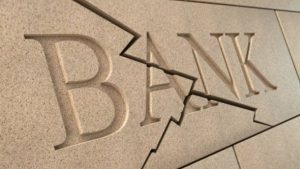
In January-June this year, Ukrainian banks increased their net profit by UAH 11.4 billion, or 16.8% compared to the same period in 2023, to UAH 79.04 billion, the National Bank of Ukraine (NBU) reported.
“The main factors of profitability are the maintenance of a high net interest margin and almost zero allocations to provisions for losses from active operations,” the NBU explained the reasons for the increase in profitability.
“In the first half of the year, only seven small banks out of 62 solvent banks were unprofitable with a total loss of UAH 171 million,” the NBU said.
According to the NBU, the profitability of banks’ core assets continued to decline in the second quarter. In particular, it fell most rapidly for NBU certificates of deposit, which led banks to reduce their investments in these securities, the regulator said.
At the same time, interest rates on domestic government bonds (OVDPs) also went down, but the volume of investments in them grew.
“It is due to the increase in assets that banks have maintained a fairly high net interest margin and increased revenues,” the regulator emphasized.
It is noted that the return on equity of banks in the first half of 2024 amounted to 48.4%, which is lower than the same indicator in the first half of 2023, which was 56%.
The amount of income tax accrued by banks in the first six months of this year amounted to UAH 21.9 billion, compared to UAH 12.4 billion in the same period last year, as the income tax rate was increased from 18% to 25%.
According to the NBU, the banking system’s net profit last year amounted to UAH 82.8 billion after charging UAH 76.2 billion in income tax at the increased rate of 50%.

The share of state-owned banks in the total assets of the banking system in the first half of 2022 increased from 49.8% to 53.4%, including by 1.7 percentage points (pp) in the second quarter, reported in the review of the banking sector, published by the National Bank on Tuesday.
According to him, of the four state-owned banks, PrivatBank makes the main contribution, which increased its market share from 24.7% to 27% in the first half of the year, including by 1.2 percentage points in the second quarter.
As reported, after the banking crisis of 2014-2016, the nationalization of PrivatBank and the additional capitalization of state-owned banks, while many private banks were withdrawn from the market, the share of state-owned banks in the market increased significantly, but began to decline in subsequent years. In particular, in 2020-2021 it decreased from 60.4% to 49.8%, including PrivatBank – from 27.9% to 24.7%.
The increase in the share of banks during the war is mainly due to a decrease in the share of foreign groups, which fell from 30.1% to 27.2% in six months, while private banks – from 20.2% to 19.4%. At the same time, in the second quarter, private banks reduced their share faster – by 1.2 percentage points, while foreign banks – by 0.5 percentage points.
The same picture is observed in relation to net assets: the share of state-owned banks increased from 46.7% to 50% in the first half of the year, including PrivatBank – from 19.8% to 22.1%. The second quarter saw an increase of 2.2 percentage points, respectively. and 1.6 p.p.
The share of state-owned banks in attracting deposits is even greater: if in 2019-2021 it decreased from 63.5% to 55.5%, then in six months of this year it increased to 59.3%, including PrivatBank – from 31.2% % to 35.4%. The second quarter saw an increase of 3.4 p.p., respectively. and 2.6 p.p.
Over the past six months, the share of deposits in foreign banks has decreased from 25% to 22.9%, in private banks – from 19.5% to 17.8%, including in the second quarter by 1.6 percentage points, respectively. and 1.8 p.p.
In general, the NBU notes an increase in market concentration: the share of assets of the ten largest banks in total assets has increased from 73.8% to 77.6% since the beginning of the war
As a result, the Herfindahl-Hirschman Index (HHI), an indicator of concentration in the banking market, which at a value of up to 1000 indicates weak market concentration, rose during the war for total assets from 945 to 1116, returning to the level of the end of 2020, although at the end of 2019 year it was even higher – 1268.
And its value in terms of deposits – 1712 compared to 1395 before the war – has become significantly higher than at the end of 2019 (1597).
The NBU clarifies that the group of foreign banks at the middle of the year included 16 banks, while the group of private ones – 48.

The banking system of Ukraine remains stable and liquid, Governor of the National Bank of Ukraine (NBU) Kyrylo Shevchenko has said.
“The banking system remains stable and liquid even under martial law. From the beginning of the war until February 28, the volume of household funds in the accounts of the largest banks increased, in particular due to the receipt of salaries,” he said in his video message on Thursday.
According to him, the outflow of deposits is hindered by the availability of noncash transactions and the limited work of banks in a number of regions.
“In addition, banks have a reserve of highly liquid assets to ensure all noncash settlements and settlements on deposits of the population, even in the current difficult conditions,” the governor of the National Bank said.
He said that additional support for banks is the conventional collateral, as well as blank refinancing introduced by the NBU for up to one year.
In addition, the NBU supports banks with cash without restrictions, Shevchenko said.

In November 2020, solvent banks of Ukraine saw UAH 3.54 billion of net profit, which is two
50% less year-over-year (UAH 7 billion), according to data published on the website of the National Bank of Ukraine (NBU).
According to the data, in January-November 2020, the banks’ net profit decreased by 28.6% year-over-year, to UAH 43.37 billion.
Banks’ incomes for 11 months increased by 3.3% year-over-year, to UAH 229.25 billion, including the result from revaluation and from sales and purchases grew by 1.4 times year-over-year (to UAH 22.5 billion), fee and commission income by 12.3% year-over-year (to UAH 62.97 billion), while interest income fell by 3.7% year-over-year (to UAH 135.49 billion).
At the same time, the banking system’s expenses for the specified reporting period amounted to UAH 186.13 billion, which is 14.1% more than in the same period in 2019. The increase in expenses was due to an increase in amounts sent to reserves (2.9 times more year-over-year), reaching UAH 25.08 billion. In addition, banks’ fee and commission expenses grew by 1.5 times, to UAH 21.57 billion, while interest expenses decreased by 13.7%, to UAH 58.46 billion.

Solvent banks in Ukraine in January-February 2020 received UAH 15.9 billion in net profit, which is 1.8 times more than in the same period in 2019 (UAH 8.7 billion), according to data published on the website of the National Bank of Ukraine (NBU).
According to the report, the income of the banks in the first two months of this year increased by 17.7% against the figure for the same period last year, to UAH 46.2 billion. In particular, commission income rose by 16.5%, to UAH 10.7 billion, the figure from revaluation, sale and purchase transactions grew by 3.6 times, to UAH 7.9 billion.
At the same time, the banking system’s expenses for January-February 2020 decreased by 1% compared to last year’s indicator, to UAH 30.3 billion, in particular, payments to reserves decreased by 2.3 times, to UAH 1.3 billion, while commission expenses increased by 36%, to UAH 3.7 billion.

The banking system is super liquid, its liquidity reaches UAH 200 billion in the hryvnia and $9 billion in foreign currency, Oleg Churiy, the deputy governor of the National Bank of Ukraine (NBU), has said. “The banking system today is super liquid. In general, liquidity reaches UAH 200 billion in the national currency and $9 billion in foreign currency. This is enough to satisfy the demand. For example, the demand for withdrawing deposits, if any,” Churiy said at a press briefing in Kyiv.
“We have instruments to support this liquidity,” the banker added.
“We do not see any changes in the banks’ deposit portfolios. Even if such processes begin, we will support the banks with liquidity, which will be operated by commercial banks,” he added.